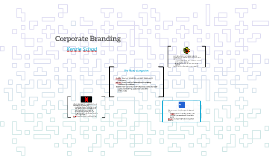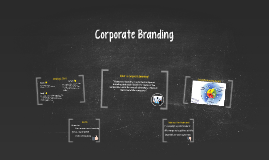Corporate Branding
Transcript: Establish and strengthen the brand and the USP Nature, Culture and Social Aspects are very important in the minds of people Creation of an identity of a destination (Williams et al., 2004) very complex and difficult systems various different stakeholders different service providers along the service chain impact of external and environmental aspects (Kotler et al., 2002) (Morgan & Pritchard, 2004) Participative process of all stakeholders Collaborative approach instead of competitive approach Orientation on values and targets of a destination Natural and cultural aspects Focus on value which are important to the target market Branding strategy goes hand in hand with the vision Brand stays credible and reliable Placefulness will be defined as a way of strengthen the sense of place through the corporate branding strategy. Sense of Place is characterized as an interaction of different factors: Community landscape ancestry time (Williams et al., 2004) The brand "Arlberg" The idea of placefulness Why is "Sense of Place" important The Brand "Arlberg" - Sense of place Buhalis, D. (2000, Februar). Marketing the competitive destination of the future. Tourism Management, pp. 97-116. Morgan, N., & Pritchard, A. (2004). Meeting the destination branding challenge. Destination branding: creating the unique destination proposition, 59-79. Williams, P., Gill, A., & Chura, N. (2004). Branding Mountain Destinations: The Battle for Placefulness. Tourism Review, 6-16. regular meetings of main stakeholders exchange of ideas and information focus on high quality - demand of the target market and customer segment work along the vision of the destination GOAL! The brand "Arlberg" Corporate Branding on mountain destinations - a long way Destinations... References Establishing a brand (Buhalis, 2000) bringing the villages St.Anton/St.Christoph, Lech/Zürs and Stuben together under one big brand common brand - international symbol for winter sport 5-pointed star - stands for the villages. The design should reflect key elements; quality and top performance - snow crystal, sun and nature Merger of the 2 ski areas St.Anton/Lech

















